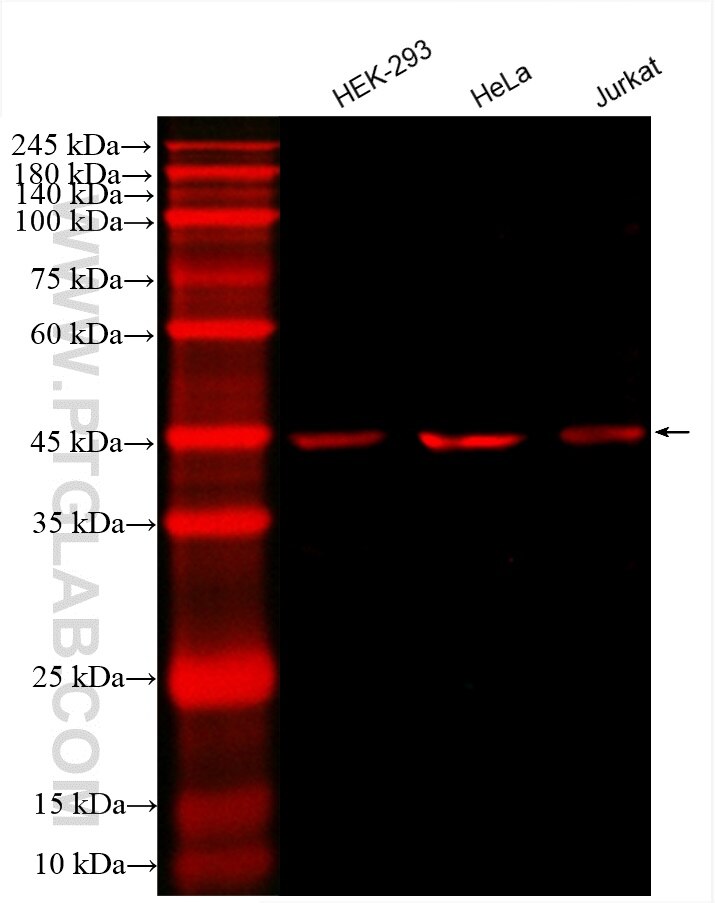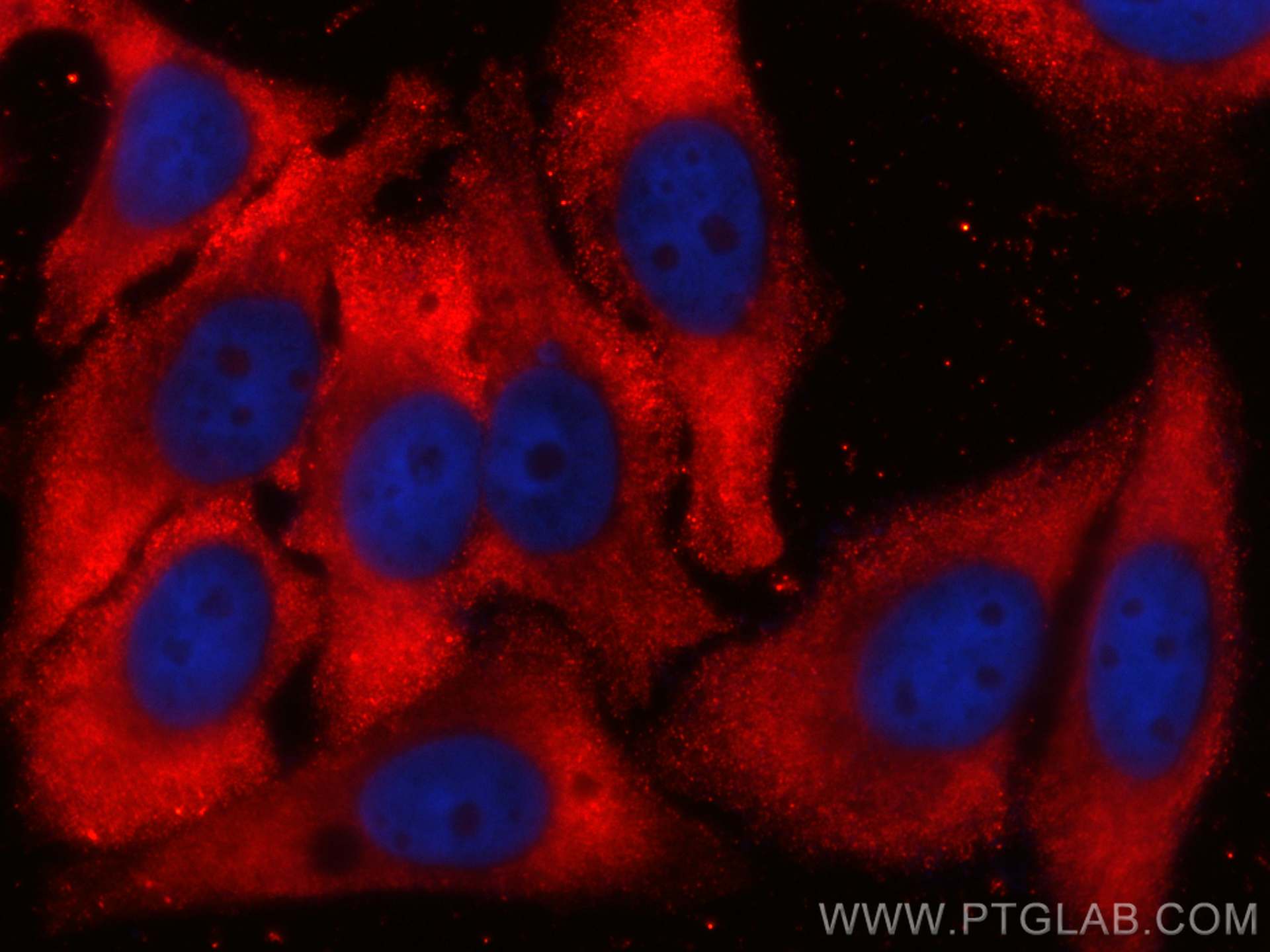Anticorps Monoclonal anti-RPL3
RPL3 Monoclonal Antibody for WB, IF/ICC
Hôte / Isotype
Mouse / IgG1
Réactivité testée
Humain, rat, souris
Applications
WB, IF/ICC
Conjugaison
CoraLite®594 Fluorescent Dye
CloneNo.
2G1B8
N° de cat : CL594-66130
Synonymes
Galerie de données de validation
Applications testées
| Résultats positifs en WB | cellules HEK-293, cellules HeLa, cellules Jurkat |
| Résultats positifs en IF/ICC | cellules HepG2, |
Dilution recommandée
| Application | Dilution |
|---|---|
| Western Blot (WB) | WB : 1:500-1:1000 |
| Immunofluorescence (IF)/ICC | IF/ICC : 1:50-1:500 |
| It is recommended that this reagent should be titrated in each testing system to obtain optimal results. | |
| Sample-dependent, check data in validation data gallery | |
Informations sur le produit
CL594-66130 cible RPL3 dans les applications de WB, IF/ICC et montre une réactivité avec des échantillons Humain, rat, souris
| Réactivité | Humain, rat, souris |
| Hôte / Isotype | Mouse / IgG1 |
| Clonalité | Monoclonal |
| Type | Anticorps |
| Immunogène | RPL3 Protéine recombinante Ag20400 |
| Nom complet | ribosomal protein L3 |
| Masse moléculaire calculée | 46/27 kDa |
| Poids moléculaire observé | 46 kDa |
| Numéro d’acquisition GenBank | BC012786 |
| Symbole du gène | RPL3 |
| Identification du gène (NCBI) | 6122 |
| Conjugaison | CoraLite®594 Fluorescent Dye |
| Excitation/Emission maxima wavelengths | 588 nm / 604 nm |
| Forme | Liquide |
| Méthode de purification | Purification par protéine G |
| Tampon de stockage | PBS with 50% glycerol, 0.05% Proclin300, 0.5% BSA |
| Conditions de stockage | Stocker à -20 °C. Éviter toute exposition à la lumière. Stable pendant un an après l'expédition. L'aliquotage n'est pas nécessaire pour le stockage à -20oC Les 20ul contiennent 0,1% de BSA. |
Informations générales
Ribosomes, the complexes that catalyze protein synthesis, consist of a small 40S subunit and a large 60S subunit. Together these subunits are composed of 4 RNA species and approximately 80 structurally distinct proteins. RPL3, also named as TARBP-B and MGC104284, belongs to the ribosomal protein L3P family. This protein is a component of the 60S subunit. It can bind to the HIV-1 TAR mRNA, and it has been suggested that the protein contributes to tat-mediated transactivation. As is typical for genes encoding ribosomal proteins, there are multiple processed pseudogenes of this gene dispersed through the genome.
Protocole
| Product Specific Protocols | |
|---|---|
| WB protocol for CL594 RPL3 antibody CL594-66130 | Download protocol |
| IF protocol for CL594 RPL3 antibody CL594-66130 | Download protocol |
| Standard Protocols | |
|---|---|
| Click here to view our Standard Protocols |



